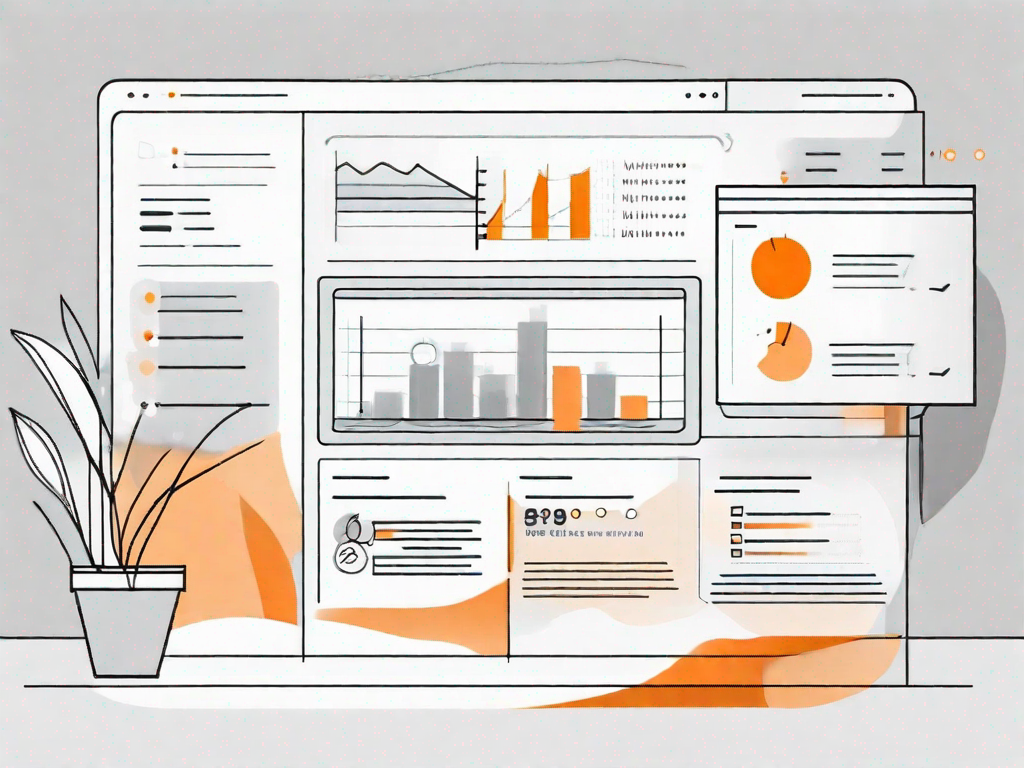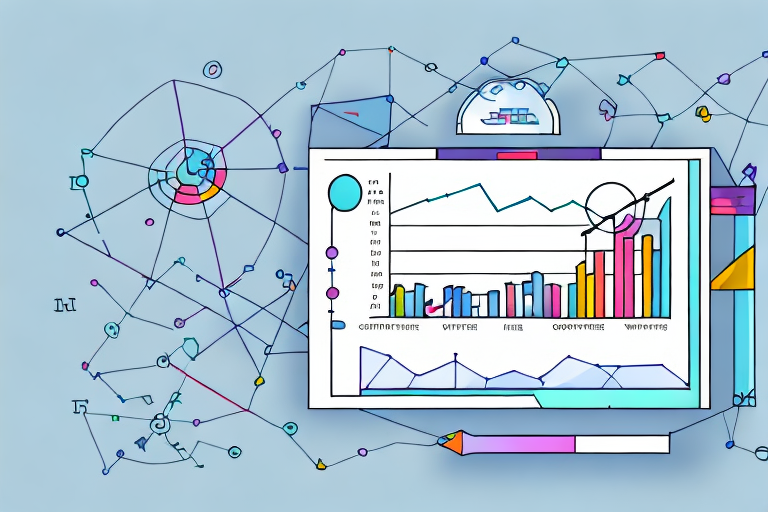.svg)
Using First-Party Data To Drive Higher ROI
.svg)

As the digital marketing environment becomes increasingly competitive, businesses have to continuously seek ways to maximise their return on investment (ROI). One of the most effective strategies to achieve this is by using first-party data. As privacy concerns and data regulations tighten, first-party data has emerged as a goldmine for marketers aiming to create personalised and impactful customer experiences. This approach not only enhances marketing effectiveness but also builds stronger customer relationships. Understanding how to harness the power of first-party data can lead to significant improvements in ROI.
Understanding First-Party Data
First-party data is information collected directly from your audience or customers. This data is gathered through various touchpoints such as website interactions, purchase history, email subscriptions, and customer feedback. Unlike third-party data, which is aggregated from external sources, first-party data is unique to your business and provides a more accurate and reliable insight into customer behaviour.
The value of first-party data lies in its authenticity and relevance. Since it is collected directly from your audience, it reflects genuine customer preferences and behaviours. This data can be used to tailor marketing strategies, ensuring that your messaging resonates with your target audience. Moreover, first-party data is compliant with data privacy regulations, as customers have willingly shared their information with your business.
With the decline of third-party cookies and increased scrutiny on data privacy, first-party data has become an essential asset for businesses. It allows marketers to build detailed customer profiles, segment audiences effectively, and deliver personalised experiences that drive engagement and conversions.
Benefits of Using First-Party Data
Enhanced Personalisation
One of the primary benefits of using first-party data is the ability to deliver highly personalised experiences. By analysing customer interactions and preferences, businesses can create tailored marketing campaigns that speak directly to individual needs and interests. Personalisation not only increases engagement but also fosters brand loyalty, as customers feel valued and understood.
For instance, e-commerce platforms can use first-party data to recommend products based on a customer's browsing history or previous purchases. Similarly, email marketing campaigns can be customised with personalised content and offers, resulting in higher open and click-through rates.
Improved Targeting and Segmentation
First-party data enables businesses to segment their audience with precision. By categorising customers based on demographics, behaviour, and preferences, marketers can target specific segments with relevant messaging. This targeted approach ensures that marketing efforts are focused on the most promising leads, thereby increasing the likelihood of conversion.
Effective segmentation also allows businesses to optimise their advertising spend. By targeting the right audience with the right message, companies can reduce wastage and maximise their ROI. This strategic use of first-party data leads to more efficient marketing campaigns and better resource allocation.
Building Customer Trust
In an era where data privacy is a top concern for consumers, using first-party data helps build trust and transparency. Customers are more likely to share their information with businesses that are transparent about how their data will be used. By prioritising data privacy and security, companies can foster trust and long-term relationships with their customers.
Moreover, first-party data allows businesses to communicate more effectively with their audience. By understanding customer preferences and pain points, companies can address concerns and provide solutions that enhance the overall customer experience. This customer-centric approach not only drives higher ROI but also strengthens brand reputation.
Strategies for Collecting First-Party Data
Optimising Website and Mobile App Interactions
Your website and mobile app are valuable sources of first-party data. By tracking user interactions, such as page views, clicks, and time spent on site, businesses can gain insights into customer behaviour and preferences. Implementing tools like Google Analytics can help monitor these interactions and collect valuable data for analysis.
Encouraging users to create accounts or subscribe to newsletters can also provide additional data points. Offering incentives, such as discounts or exclusive content, can motivate users to share their information willingly. This data can then be used to personalise user experiences and drive engagement.
Utilising Customer Feedback
Customer feedback is a rich source of first-party data that can provide valuable insights into customer satisfaction and expectations. Surveys, reviews, and feedback forms allow businesses to gather direct input from their audience. Analysing this feedback can help identify areas for improvement and inform future marketing strategies.
Encouraging customers to leave reviews or participate in surveys can be facilitated through incentives or loyalty programmes. By actively seeking and responding to feedback, businesses demonstrate their commitment to customer satisfaction, which can enhance brand loyalty and drive higher ROI.
Leveraging Social Media Engagement
Social media platforms offer a wealth of first-party data through user interactions, comments, and likes. By monitoring social media engagement, businesses can gain insights into customer interests and preferences. This data can be used to tailor social media campaigns and create content that resonates with the audience.
Engaging with customers on social media also provides an opportunity to build relationships and foster brand loyalty. By responding to comments and messages, businesses can demonstrate their commitment to customer service and enhance the overall customer experience.
Implementing First-Party Data for Higher ROI
Creating Personalised Marketing Campaigns
Once first-party data is collected, it can be used to create personalised marketing campaigns that drive higher ROI. By analysing customer data, businesses can identify trends and preferences that inform campaign strategies. Personalised content, offers, and recommendations can be delivered through various channels, such as email, social media, and website interactions.
Testing and optimising campaigns based on data insights can further enhance their effectiveness. A/B testing different elements, such as subject lines, visuals, and calls-to-action, can help identify what resonates best with the audience. This data-driven approach ensures that marketing efforts are continuously refined for maximum impact.
Enhancing Customer Retention
First-party data is instrumental in developing strategies for customer retention. By understanding customer behaviour and preferences, businesses can create loyalty programmes and personalised offers that incentivise repeat purchases. Retaining existing customers is often more cost-effective than acquiring new ones, making it a crucial component of driving higher ROI.
Additionally, first-party data can be used to identify at-risk customers and implement targeted retention strategies. By addressing potential issues and providing tailored solutions, businesses can reduce churn and maintain a loyal customer base.
Optimising Product and Service Offerings
First-party data provides valuable insights into customer needs and preferences, which can inform product and service development. By analysing customer feedback and behaviour, businesses can identify gaps in their offerings and develop solutions that meet customer demands.
This data-driven approach to product development ensures that businesses remain competitive and relevant in the market. By continuously refining and optimising their offerings, companies can enhance customer satisfaction and drive higher ROI.
Challenges and Considerations
Data Privacy and Compliance
While first-party data offers numerous benefits, businesses must prioritise data privacy and compliance. Ensuring that data collection and usage adhere to regulations, such as the General Data Protection Regulation (GDPR), is essential to maintaining customer trust. Implementing robust data security measures and obtaining explicit consent from customers are critical steps in safeguarding data privacy.
Transparency is key to building trust with customers. Clearly communicating how data will be used and providing options for customers to manage their preferences can enhance transparency and foster positive relationships.
Data Integration and Management
Effectively managing and integrating first-party data can be challenging for businesses. With data collected from various sources, ensuring that it is organised and accessible is crucial for analysis and decision-making. Implementing data management platforms and tools can help streamline data integration and provide a unified view of customer information.
Regularly updating and cleaning data is also important to maintain its accuracy and relevance. Outdated or incorrect data can lead to misguided marketing strategies and hinder ROI improvements.
Conclusion
Leveraging first-party data is a powerful strategy for driving higher ROI in today's data-driven marketing landscape. By understanding and instrumentalising customer insights, businesses can create personalised experiences, improve targeting, and build lasting customer relationships. While challenges such as data privacy and management exist, the benefits of using first-party data far outweigh the obstacles. By prioritising data-driven strategies, businesses can enhance their marketing effectiveness and achieve sustainable growth.
Let's
Let’s discuss how we can bring reinvigorated value and purpose to your brand.







.svg)